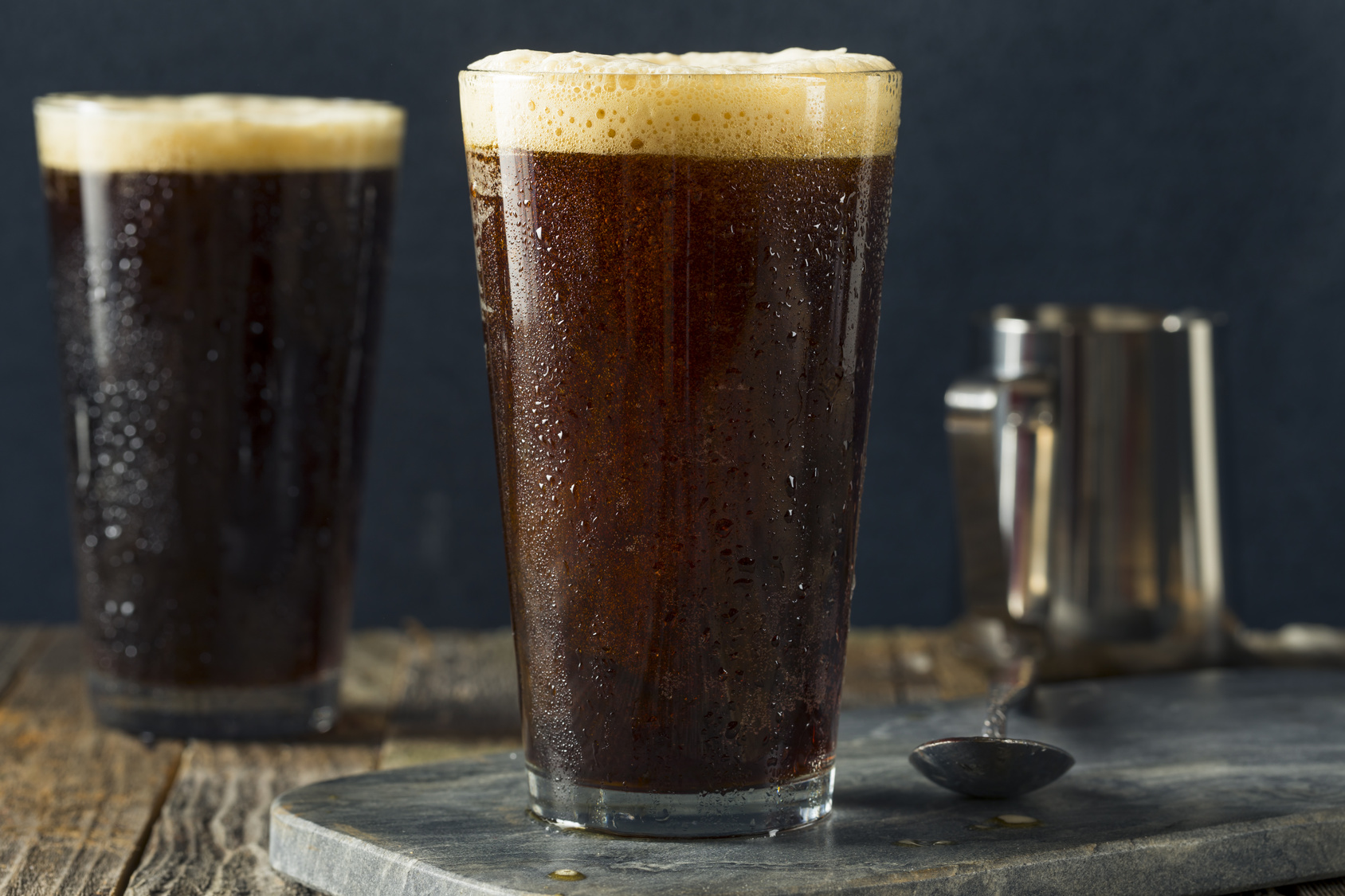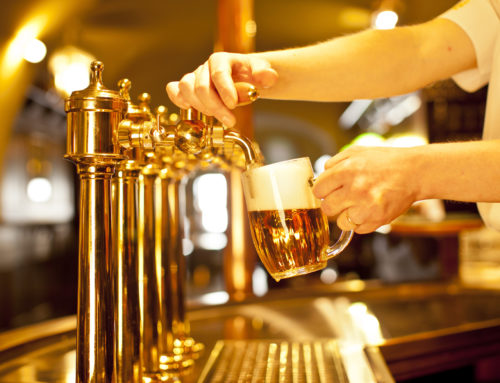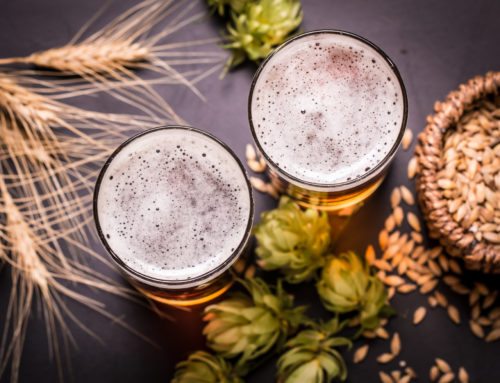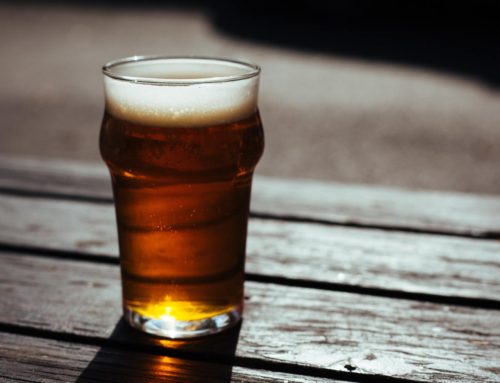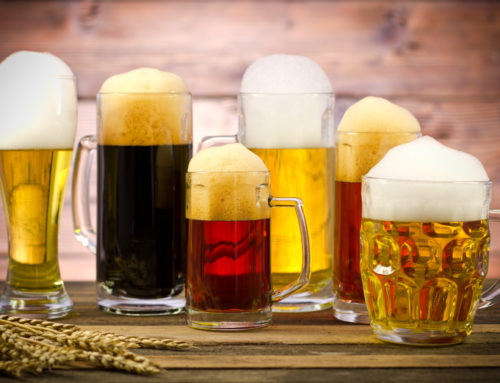You may have noticed a new trend in beer: beer on nitro. But have you ever wondered what that means?
If you’re wondering what makes beer on nitro different than regular beer, you’ve come to the right place.
The simple answer is that beer on nitro differs in the way it is made as well as the way it is packaged than traditional carbon dioxide dominant beers.
Nitrogen is used in place of carbon dioxide to carbonate the beer. Nitrogen is a stronger compound in liquid form than carbon dioxide, so it maintains a smooth, frothy texture than isn’t achieved by CO2 beers.
If you’ve ever tasted one, you can attest to the rich mouthfeel and lower acidity compared to traditionally made brews.
Because of this reason, this beer is most often associated with malty brews like stouts. However, the increased popularity of craft beers has seen more experimentation. Now you can even find strong double IPA beer on nitro, resulting in a smooth experience with less bite than a traditional double IPA.
In case you want to impress you friends when you see a nitro tap pop up at your local bar, here’s everything you need to know about beer on nitro and how a beer on nitro keg works.
Who Created Beer On Nitro?
The use of nitrogen in beer was actually a result of trying to improve the shelf life of Guinness beer. Nitrogen is relatively insoluble, meaning it is more stable and better able to keep it’s shape than carbon dioxide.
A lot of factors affect the shelf life of beer, but among the many, yeast is the most unpredictable and hard to control.
Yeasts feed on sugars and starch in the beer, creating energy. The energy is released in the form of carbon dioxide, creating bubbles. This is the same thing that gives bread it’s spongy texture.
Yeast ferments sugar into alcohol and carbon dioxide, creating carbonation in the beer. By eliminating the need for yeast, the beer could be better controlled.
As the beer aged, the carbon dioxide would start to collapse, resulting in flat beer. Bartenders would typically mix a more mature beer with a younger beer to create the iconic and delicious foam atop the beer.
They called it “the draft problem.” And it was going to take a team of scientists to solve it.
A brilliant mind named Michael Ash was hired by Guinness to improve the shelf life of their bottled beers.
He eventually went on to tackle “the draft problem” to expand the potential of Guinness to be served outside of Ireland on draft, not just in bottles.
Around the same time, kegged beer was gaining popularity over cask beer, because of the significant ease in controlling the quality of the product.
The nitro kegs were invented in 1959, right at the 200 year anniversary of Guinness. The technology allowed for nitro beer to become more mainstream.
What Goes In to Nitro Keg Production?
So, nitro beers are most loved for their thick, foamy head that keeps its shape so well it could hold a bottle cap. This texture is best achieved with the use of a keg and high quality beer on nitro tap.
But what goes in to the process of nitro keg production? How does a nitro keg and tap differ from a more traditional carbon dioxide keg and tap?
First we have to talk about how a typical keg operates. With the need to control temperature, texture, taste, carbonation levels, and more, they’re actually quite complicated. More complicated that you might think.
A restaurant grade keg pushes carbon dioxide into the beer keg, forcing the liquid down and pressing it up a tube. The beer enters that tube and pours into your glass through the tap.
Helpful tip: If the tap isn’t all the way open or the keg is nearing empty, the beer is pushed with uneven pressure, causing too much foam.
The kegs have to be kept at a specific temperature for both taste and carbonation levels. If the tap is far from the keg, the line the beer travels through is refrigerated to maintain the temperature of the beer.
Most tap systems use a blend of predominately carbon dioxide and a smaller portion of nitrogen so that the beer stays carbonated longer due to the stronger liquid compound of nitrogen vs carbon dioxide.
In kegs that serves beer on nitro, there is a much higher percentage of nitrogen to carbon dioxide. This still carbonates the liquid but changes the texture of the beer significantly. It also influences the flavors and mouthfeel of the beer.
In addition, the tap incorporates a small, porous filter in the line that breaks up and activates the nitrogen, creating that iconic carbonation.
What About a Keg Party?
If you’re wondering, those frat party kegs don’t work quite the same way. Those kegs use the air around them instead of carbon dioxide to press the beer out of the keg, which is why it goes flat faster and tastes worse as the keg nears empty.
The beer is oxygenated and falls flat, plus it absorbs everything in the air, affecting the taste and quality of the beer. If you want to maintain the integrity of the beer flavor and avoid drinking everything in the air around you, skip the keg stands.
Some Beer Drinkers Love It, Some Hate It
Nitro beer is actually somewhat controversial to beer enthusiasts. At least, beer on nitro has somewhat polarized responses. Which side of the debate do you fall on? Beer packed with a punch or a creamy, frothy texture? The only way you’ll find out if you like beer on nitro is to try it.
Beer on nitro is criticized by beer traditionalists because the nitrogen changes the taste of the beer, muting some of its flavors. You also lose some of your bubbles in place of that beer commercial favorite foamy head.
Also, the way carbon reacts with beer creates an acidic taste, which many drinkers enjoy. Carbon particularly enhances the hoppy quality of hop based beers, which many drinkers seek out. The acidic beers are also enhanced by carbon because of the prickly sensation created by carbon dioxide bubbles.
However, many other drinkers prefer the taste of beer on nitro because it provides an easier drinking experience. The acidity is lower in nitro beers, as is the hoppy taste. The result is a creamy, malted style beer with a thick mouthfeel. Critics say that this flattens the flavor profile in a bad way because it doesn’t serve the same punch as a CO2 carbonated beer.
Don’t forget that beer on nitro still incorporates carbon dioxide. Many brewers use an approximate 2/3 nitrogen to 1/3 carbon dioxide ration. This varies, of course. This still allows the beer to have a bubbly carbonation, yet a smoother mouthfeel, much like a root beer float, but in beer form.
Beer aficionados believe that there is a beer for everyone; if they don’t like beer they just haven’t found the right one. A drinker looking for a softer beer drinking experience should definitely get their hands on a beer on nitro. Those who love beers the hoppier the better, probably won’t be as into nitro beers. To each his own.
It Doesn’t Stop At Beer: Nitro Cold Brew, Too?
Did you know? Nitro technology has started to become increasingly popular with cold brew lovers as well.
Cold brew is preferred by many an iced coffee drinker because of the purer taste extracted from the grounds over a longer period of time. Coffee that is heated produces a different flavor profile that can sometimes taste burnt or bitter.
Cold brew is enhanced by nitrogen even further because it makes the coffee smoother and richer. If you’re thinking this will make the coffee as bubbly as a soda, think again. The small bubbles of nitrogen create a milky quality rather than a prickly carbonated one.
Serving cold brew on nitro creates a cappuccino like foam and a less acidic taste. This enhances the flavors of the coffee and reduces the need for milk and sugar since there is less bitterness to combat.
Check out more on nitro cold brew in our article: “Nitro Coffee: Coming to a Tap Near You.”
That’s It!
Get a nitro beer tap from QuikTap today!
The QuikTap Nitro Keg System includes one QuikTap with Stout Creamer Faucet, one QuikConnect Single Hose Bulk adapter, one on/off valve (1/4″ NPT) with Quick Disconnects, and a 15 inch coiled gas hose. Get yours now for only $244.99-$299.99.
Bring a quality nitro tap to your beer line up to set yourself apart from the rest and show your appreciation of the science behind beer.
Consider enjoying a beer on nitro instead of your typical brew on your next beer drinking occasion. Of course, please remember to drink responsibly.
Thanks for checking out the QuikTap blog! Browse our website for all of the tap systems and accessories you could ever need. Did you know we also carry wine taps?

